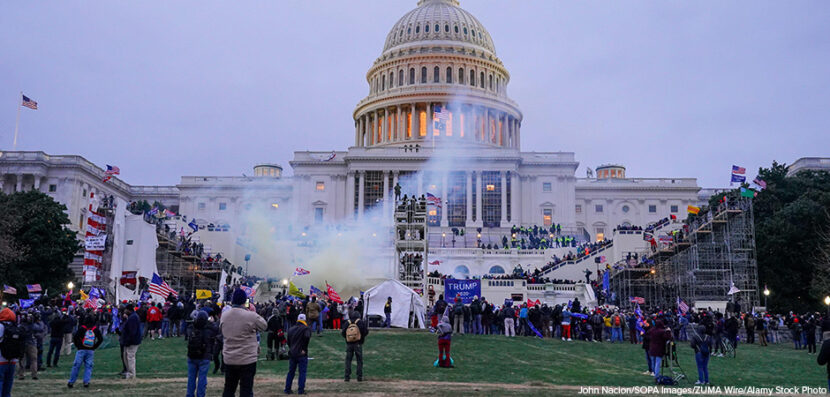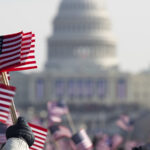- Current Events Nebraska Rejects Winner-Take-All Proposal
- Citizenship Voting Under Age 18
- Citizenship Citizenship in Action
- Democratic Party Biden’s and Trump’s Recent Primary Results
- Elections Trump and Biden Win South Carolina and Michigan Primaries
- Democratic Party Trump and Biden Win Big in Early February Contests

Attack on the United States Capitol
On January 6, 2021, in Washington, D.C. a hostile group of Trump supporters attacked the United States Capitol Building as Congress was in session. They delayed the final step of certifying the 2020 presidential electoral votes.
The protestors surged past security barriers and broke windows to enter the Capitol. They forced Capitol Police to retreat into the Capitol building. Vice President Pence and the members of Congress were evacuated to secure locations. Many Capitol Police sustained injuries during the attack. One woman was shot and killed by a Capitol Police officer as she attempted to enter a restricted area. A Capitol Police officer also died from the injuries he sustained during the violence. In total, six people—including a second member of the Capitol Police—have died because of the violence that occurred during the protest.
Contrasting a History of Peaceful Protest
Marching to the Capitol and demonstrating peacefully is a legal expression of a citizen’s First Amendment rights. There are many historical instances where large crowds peacefully demonstrated in Washington, D.C., including the 1963 March on Washington for Jobs and Freedom. There were also several peaceful Women’s Marches held in the last four years. Wednesday’s events were remarkable because such violent protests are historically rare following a U.S. election. The nation’s previous presidential changes sometimes stirred anger but always resulted in a peaceful transition of power from one executive to the next.
Following the November election, President Donald Trump refused to concede his election defeat. Trump’s legal teams filed over 50 court challenges in several states claiming election errors. All the courts and the United States Justice Department have found no evidence supporting these claims. Earlier in the day, President Trump spoke to his supporters at a rally. He repeated his false claims that the election was unfair. He told his supporters that they should march to the United States Capitol Building and show their disapproval of the election. President Trump later made a video message telling people to go home. However, he continued to make false claims about the outcome of the election.
Reactions to the Attack
President-elect Joe Biden and Republican Senator Mitt Romney used the word “insurrection” to describe the Capitol break-in–a violent uprising against the government. Many Americans are shocked that a hostile group could enter the United States Capitol building so easily. Law enforcement seemed ill-equipped and unprepared for the severity of the threat. Representative Cori Bush of Missouri took part in Black Lives Matter protests throughout the summer. She remarked that the police response to those protests was much more forceful than the police response to the attack on Congress by the mainly White rioters.
The events of January 6 have disturbed and upset many Americans. They have shown how divided the country continues to be. Despite the events and dangers of the day, members of Congress returned to work after law enforcement regained control within and outside the Capitol Building. Congress returned to finalize the certification process and in the early hours of Thursday morning, they made Joe Biden’s and Kamala Harris’s election victory official.


